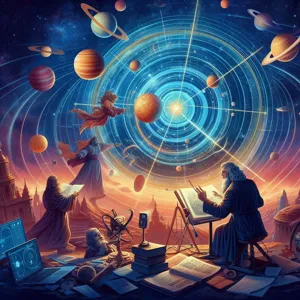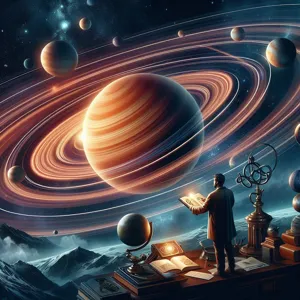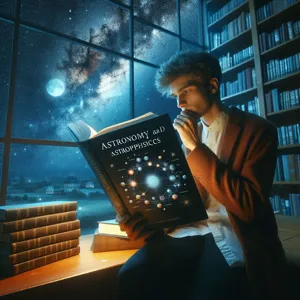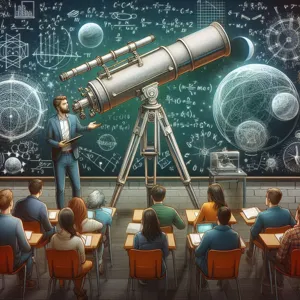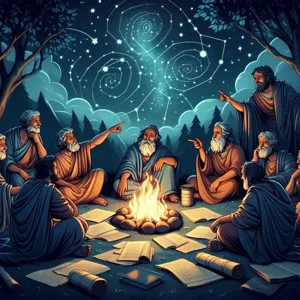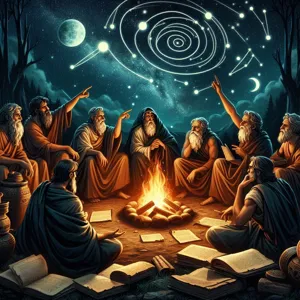The vast expanse of our solar system is a mesmerizing tapestry of swirling planets, glowing stars, and enigmatic celestial bodies, each holding secrets that have tantalized humanity for centuries.
As we gaze into the night sky, we are not merely observers; we are explorers seeking to understand the intricate dance of these cosmic entities. Astronomers, armed with advanced technology and relentless curiosity, delve deep into the mysteries of celestial dynamics, employing sophisticated methods to study the movements and interactions of planets, moons, asteroids, and beyond. In this blog post, we will unlock the secrets of the solar system by exploring the groundbreaking techniques and tools that astronomers use to decode the rhythms of the cosmos. Join us on this enlightening journey as we uncover how these scientific pioneers unravel the complex web of gravitational forces, orbital patterns, and celestial phenomena that shape our understanding of the universe.
1. Introduction to Celestial Dynamics
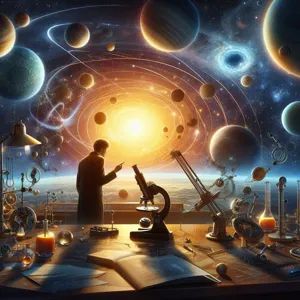
Celestial dynamics, the branch of astrophysics that focuses on the motions and gravitational interactions of celestial bodies, serves as the cornerstone of our understanding of the solar system. This fascinating field encompasses everything from the orbits of planets and moons to the complex interactions of stars within galaxies. As we peer into the vast expanse of the cosmos, we witness a cosmic ballet, where celestial bodies are constantly in motion, influenced by gravitational forces and their own inherent properties.
The study of celestial dynamics allows astronomers to unravel the intricate patterns that govern these movements. By applying the laws of physics, particularly Newtonian mechanics and Einstein’s theory of relativity, scientists can predict the behavior of objects ranging from asteroids to distant exoplanets. This predictive power is crucial not only for exploring the solar system but also for understanding the larger dynamics of the universe.
In our quest to comprehend these celestial mechanics, astronomers employ a variety of advanced tools and techniques, including computer simulations, observational data from telescopes, and space missions that gather invaluable information about the bodies within our solar system. With every discovery, we gain deeper insights into the formation and evolution of planetary systems, the stability of orbits, and the potential for life beyond Earth.
As we embark on this journey through celestial dynamics, we’ll uncover the methodologies and technologies that astronomers use to study the motions of celestial bodies, revealing the secrets of our solar system and the universe at large. Join us as we explore the forces that shape our cosmic neighborhood and illuminate the wonders that lie beyond our planet.
2. The Importance of Studying the Solar System
The importance of studying the solar system goes far beyond mere curiosity about the cosmos; it serves as a crucial foundation for understanding our own planet and the broader universe. By examining the various celestial bodies that inhabit our solar system—ranging from the majestic gas giants to the rocky inner planets—we gain invaluable insights into the processes that shape planetary formation, evolution, and dynamics.
Understanding our solar system helps astronomers unravel fundamental questions about the origins of Earth and the conditions that foster life. For example, studying Mars’ geology and atmosphere provides clues about its past habitability and informs our search for extraterrestrial life. Similarly, examining the moons of Jupiter and Saturn, such as Europa and Enceladus, reveals potential environments that might support microbial life beneath their icy crusts.
Moreover, our solar system acts as a natural laboratory where astronomers can observe and test theories about gravitational interactions, orbital mechanics, and the behavior of various celestial phenomena. The dynamics of asteroids and comets, for instance, offer a glimpse into the early solar system and the building blocks that led to planet formation. By studying these objects, scientists can also assess potential threats to Earth, such as the paths of near-Earth asteroids, and develop strategies for planetary defense.
In an era of climate change and environmental challenges, understanding solar system dynamics also illuminates Earth’s climate history and the factors that have influenced its evolution over millions of years. By analyzing the atmospheres of other planets, we can better comprehend the mechanics of climate systems and the potential consequences of our own actions on Earth.
In summary, the study of our solar system is not merely an academic exercise; it is a pursuit that enriches our knowledge of the universe, informs our understanding of Earth, and enhances our ability to safeguard our planet’s future. By unlocking the secrets of our celestial neighborhood, astronomers pave the way for groundbreaking discoveries that resonate across multiple fields of science, ultimately deepening our connection to the cosmos.
3. Tools of the Trade: Instruments Used by Astronomers

To unlock the mysteries of our solar system, astronomers rely on an array of sophisticated tools and instruments that have revolutionized our understanding of celestial dynamics. Each piece of equipment serves a unique purpose, enabling scientists to observe, measure, and analyze celestial bodies with unparalleled precision.
At the forefront of these instruments are telescopes, the quintessential tools of astronomers. From ground-based observatories equipped with powerful optical telescopes to space-based observatories like the Hubble Space Telescope, these devices allow astronomers to capture light from distant stars and galaxies. Optical telescopes focus on visible light, while radio telescopes detect radio waves emitted by celestial objects, revealing information that is invisible to the naked eye. The combination of these technologies helps astronomers piece together a comprehensive picture of the universe.
Spectrometers are another critical tool in an astronomer’s arsenal. By analyzing the light spectrum emitted or absorbed by stars and other celestial bodies, spectrometers provide invaluable insights into their composition, temperature, density, and motion. This data allows astronomers to determine not just what these objects are made of, but also their distance from Earth and how they are moving through space.
In addition to telescopes and spectrometers, spacecraft equipped with advanced sensors and cameras have transformed our understanding of the solar system. Missions like NASA’s Voyager and Mars rovers have provided detailed images and data from the surfaces of planets and moons, offering a firsthand look at their geology and atmospheres. With instruments capable of measuring everything from atmospheric pressure to magnetic fields, these missions have unveiled new worlds and challenged our existing theories.
Finally, computer simulations and modeling software play a pivotal role in studying celestial dynamics. Astronomers use these tools to create models that simulate gravitational interactions, orbital mechanics, and the evolution of celestial bodies over time. By inputting observational data into these simulations, they can predict the future movements of planets, asteroids, and comets, enhancing our understanding of their behaviors and potential impacts on our planet.
Together, these instruments and technologies form a robust toolkit that empowers astronomers to explore the vast expanse of our solar system. As they continue to innovate and refine these tools, we can expect even greater discoveries that will deepen our appreciation of the cosmos and our place within it.
4. The Role of Telescopes in Observing Celestial Bodies
Telescopes serve as the gateway to the cosmos, enabling astronomers to peer into the depths of space and unravel the mysteries of celestial dynamics. These remarkable instruments are not just oversized lenses; they are finely-tuned machines designed to capture and magnify light from distant stars, planets, and galaxies. The evolution of telescope technology has transformed our understanding of the universe, allowing us to observe objects that are billions of light-years away.
Historically, the first telescopes were mere refractors, using glass lenses to bend and focus light. However, as our thirst for knowledge grew, so did the complexity and capability of these instruments. Modern telescopes come in various forms, including reflectors, which utilize mirrors to gather light, and radio telescopes, which detect radio waves emitted by celestial bodies. Each type of telescope contributes uniquely to our understanding of the universe, offering different perspectives and insights based on the wavelengths of light they capture.
Observatories equipped with powerful telescopes are scattered across the globe and even in space, such as the iconic Hubble Space Telescope. These high-tech platforms allow astronomers to conduct both routine observations and groundbreaking research. With advanced imaging techniques, telescopes can reveal the intricate details of planetary atmospheres, the composition of distant stars, and the gravitational effects of massive black holes.
Moreover, telescopes do not merely observe; they also play a crucial role in the dynamic study of celestial bodies. By tracking the movements and behavior of these entities over time, astronomers can uncover vital information about their orbits, interactions, and the forces that govern their existence. For instance, the observation of asteroids and comets provides insights into the early solar system, while the monitoring of exoplanets reveals the potential for life beyond Earth.
In essence, telescopes are the eyes through which we explore the universe. They are indispensable tools in our quest to understand the complex dance of celestial dynamics, illuminating the paths of stars and planets, and ultimately leading us closer to answering the age-old question: What lies beyond our world?
5. Understanding Orbits: Kepler’s Laws of Planetary Motion

Kepler’s Laws of Planetary Motion serve as the cornerstone for our understanding of how celestial bodies navigate the vastness of space. Formulated in the early 17th century by Johannes Kepler, these three fundamental laws revolutionized astronomy and provided a framework that remains vital to modern celestial mechanics.
The first law, known as the Law of Ellipses, states that planets move in elliptical orbits around the sun, with the sun positioned at one of the two foci of the ellipse. This was a groundbreaking departure from the previously accepted notion of circular orbits, highlighting the dynamic and varied paths that planets take as they travel through the solar system. Understanding this elliptical motion allows astronomers to predict the positions of planets over time accurately.
Kepler’s second law, or the Law of Equal Areas, delves deeper into the speed of a planet’s orbit. It asserts that a line segment joining a planet and the sun sweeps out equal areas during equal intervals of time. In simpler terms, this means that a planet moves faster when it is closer to the sun and slower when it is farther away. This insight reveals the gravitational influences at play and helps astronomers calculate the orbital speeds of various celestial bodies.
Finally, the third law, the Law of Harmonies, establishes a relationship between the time a planet takes to orbit the sun and its average distance from the sun. Expressed mathematically, it indicates that the square of a planet’s orbital period is proportional to the cube of the semi-major axis of its orbit. This law allows astronomers to compare the orbital characteristics of different planets and to understand the gravitational dynamics that govern their motions.
Together, these laws provide a comprehensive framework for astronomers to analyze and predict the behaviors of not just our solar system’s planets, but also exoplanets and other celestial objects across the universe. With the advent of advanced telescopes and computer simulations, researchers can now apply Kepler’s Laws to explore the intricate dance of celestial bodies, unlocking secrets of their formation and evolution while enhancing our understanding of the cosmos.
6. The Influence of Gravity on Planetary Movement
Gravity is the invisible thread that weaves the intricate tapestry of our solar system, guiding the dance of planets, moons, and even the comets that streak through the void. At the heart of this cosmic ballet lies the fundamental force of gravity, a powerful attraction that governs the movement of celestial bodies. Understanding how gravity influences planetary dynamics is essential for astronomers seeking to unravel the mysteries of our solar system.
Each planet orbits the Sun in a path known as an ellipse, a phenomenon beautifully illustrated by Johannes Kepler’s laws of planetary motion. The strength of gravity dictates the shape and stability of these orbits, ensuring that planets remain tethered to the Sun while maintaining their unique trajectories. The closer a planet is to the Sun, the stronger the gravitational pull it experiences, resulting in faster orbital speeds. This is why Mercury, the innermost planet, completes its orbit in just 88 Earth days, while the distant Neptune takes a staggering 165 Earth years to make a single trip around the Sun.
But gravity’s influence extends beyond mere orbits; it also governs the interaction between celestial bodies. The gravitational pull of a larger planet can affect the orbits of smaller moons or asteroids, causing them to change their paths in what is known as gravitational perturbation. This interaction can lead to fascinating phenomena, such as the formation of rings around planets or the occasional collision of asteroids, which astronomers study to gain insights into the early solar system’s history.
Moreover, gravity doesn’t act in isolation; it works in concert with other forces, such as those exerted by the Sun’s radiation and the magnetic fields of planets. These forces can create complex patterns of movement, leading to phenomena like tidal forces, which play a significant role in shaping the surfaces of moons and planets. The gravitational tug-of-war between Earth and its moon, for instance, gives rise to ocean tides, a rhythm that has influenced life on our planet for millennia.
As astronomers continue to explore the cosmos, tools like gravitational wave detectors and computer simulations allow them to delve deeper into the intricacies of gravitational interactions. By studying these dynamics, we gain not only a clearer picture of our solar system but also a greater understanding of the fundamental laws that govern the universe itself. The influence of gravity on planetary movement is a reminder of the elegance and complexity of the celestial mechanics that shape the world we live in and the vast space beyond.
7. The Use of Computer Simulations in Celestial Dynamics
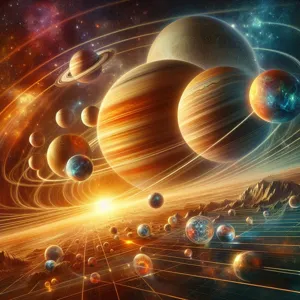
In the realm of celestial dynamics, computer simulations have emerged as a transformative tool, unlocking new ways for astronomers to study the intricate motions and interactions of celestial bodies. By harnessing the power of advanced algorithms and vast computational resources, researchers can create detailed models of the solar system, allowing them to visualize and analyze phenomena that are often too complex to observe directly.
These simulations serve as powerful laboratories where astronomers can test hypotheses and explore scenarios that span millions, or even billions, of years. For instance, when scientists seek to understand the gravitational influences of massive bodies like Jupiter or the subtle perturbations caused by distant exoplanets, they can simulate countless iterations of these interactions. This not only helps them predict the orbits of planets and asteroids but also sheds light on the past and future configurations of the solar system.
Moreover, computer simulations are instrumental in studying events such as planetary collisions or the formation of moons. By recreating these events in a virtual space, astronomers can analyze the resulting dynamics, providing insights into the processes that shaped our celestial neighborhood. These digital experiments also play a critical role in the search for potentially hazardous asteroids, allowing scientists to predict their trajectories and assess any risks they may pose to Earth.
As technology continues to advance, the fidelity and complexity of these simulations are expected to grow exponentially, enabling astronomers to tackle even more ambitious questions. By integrating observational data with simulation results, researchers are piecing together the intricate puzzle of the solar system’s evolution, revealing the dynamic and ever-changing nature of the cosmos. In this way, computer simulations not only enhance our understanding of celestial dynamics but also inspire a deeper appreciation for the vastness and complexity of the universe in which we reside.
8. Tracking Asteroids and Comets: Challenges and Methods
Tracking asteroids and comets presents a unique set of challenges for astronomers, demanding precision, innovation, and a keen understanding of celestial dynamics. Unlike the more stable orbits of planets, these small bodies often have highly eccentric orbits that can change dramatically due to gravitational interactions with larger celestial objects. This unpredictability makes it essential for astronomers to employ a variety of methods to locate, monitor, and predict the paths of these wanderers of the solar system.
One of the primary challenges in tracking these objects is their size and distance. Many asteroids and comets are relatively small, making them difficult to spot against the vast backdrop of stars. Advanced telescopes equipped with sensitive detectors are crucial for identifying these faint objects, often requiring long exposure times and sophisticated imaging techniques. Astronomers utilize wide-field survey telescopes to scan large portions of the night sky, capturing images that can then be analyzed for potential asteroids or comets.
Once an object is identified, astronomers must calculate its trajectory, a task made complex by the influences of gravity from planets and the solar wind. These calculations can be further complicated by the non-uniform shapes of some asteroids, which may cause variations in their orbits due to uneven mass distribution. To address this, astronomers often employ computer simulations and algorithms that factor in various gravitational influences, allowing for more accurate predictions of an object’s path.
Another innovative method involves the use of radar, particularly for near-Earth objects. By bouncing radar waves off these celestial bodies, astronomers can gather detailed information about their size, shape, and rotation. This data not only aids in tracking their trajectories but also provides insight into the composition and structure of these intriguing objects.
Public engagement also plays a crucial role in tracking asteroids and comets. Citizen science projects, such as those that encourage amateur astronomers to contribute their observations, have proven invaluable. These collaborative efforts expand the pool of data and observations, further enhancing the ability of professional astronomers to monitor these celestial bodies.
Ultimately, the study of asteroids and comets is not just about tracking their movements; it’s about understanding the history of our solar system and preparing for potential future encounters. As technology advances and our methodologies evolve, astronomers continue to unlock the secrets of these fascinating objects, delving deeper into the dynamics that govern their celestial ballet.
9. The Impact of Space Missions on Our Understanding
Space missions have profoundly transformed our understanding of celestial dynamics, acting as the bridge between theoretical astronomy and practical exploration. From the early days of space travel, when the Soviet Union launched Sputnik into orbit, to the sophisticated missions of today, each expedition has provided invaluable data that enriches our comprehension of the solar system.
Consider the iconic Voyager missions, which launched in the late 1970s and have since traveled beyond the outer planets. Voyager 1 and Voyager 2 have sent back breathtaking images and scientific data that have reshaped our knowledge of the gas giants and their moons. For instance, the stunning discoveries about Jupiter’s intricate cloud patterns and the volcanic activity on Io have prompted scientists to rethink the dynamics of planetary atmospheres and their geological processes.
More recently, missions like NASA’s Mars rovers—Curiosity and Perseverance—have been pivotal in uncovering the history of water on the Red Planet, offering insights into potential habitability and the planet’s climatic evolution. These rovers not only analyze soil samples and atmospheric conditions but also relay real-time data that helps astronomers understand the intricate dance of planetary bodies in relation to their stars.
Additionally, the Hubble Space Telescope has expanded our perspective beyond our solar system, allowing astronomers to explore the dynamics of distant galaxies and the effects of dark matter and dark energy on cosmic structures. The telescope’s capabilities have led to breakthroughs in understanding gravitational interactions, providing a clearer picture of how celestial bodies influence one another over vast distances.
Each mission contributes to a mosaic of knowledge, revealing the forces that govern celestial mechanics—from gravitational pulls to the impact of solar winds. The data collected from these explorations not only fuels academic research but also inspires the next generation of astronomers and scientists. As technology advances and new missions are launched, the secrets of the solar system continue to unfold, demonstrating that our quest for knowledge is as infinite as the cosmos itself.
10. Analyzing Light: Spectroscopy and Its Applications
Analyzing light through the powerful tool of spectroscopy offers astronomers a window into the universe, revealing the intricate details of celestial bodies. Spectroscopy is based on the principle that light interacts with matter, producing unique patterns that can tell us a wealth of information about the composition, temperature, density, and motion of stars and galaxies.
When light from a celestial object passes through a prism or diffraction grating, it spreads out into a spectrum—a rainbow of colors. Each element emits or absorbs light at specific wavelengths, creating a distinctive fingerprint. By studying these spectral lines, astronomers can identify the elements present in stars, planets, and even distant galaxies. For instance, the presence of hydrogen, helium, or heavier elements can indicate nuclear fusion processes occurring within stars, while the absorption lines can reveal the chemical makeup of exoplanet atmospheres.
Moreover, spectroscopy is not only useful for identifying materials but also for understanding the dynamics of celestial objects. By examining the redshift or blueshift of spectral lines, astronomers can determine whether an object is moving away from us or toward us, providing insights into the expansion of the universe and the motion of galaxies. This technique is fundamental in studying phenomena such as the Doppler effect, which informs us about the rotational speeds of stars and the dynamics of galaxies.
Additionally, spectroscopy has practical applications in the search for life beyond Earth. By analyzing the light from exoplanets as it passes through their atmospheres during transit, scientists can detect potential biosignatures—chemical indicators like methane or oxygen that suggest the presence of life.
In essence, spectroscopy is a cornerstone of modern astronomy, unlocking the secrets of the cosmos by transforming light into a treasure trove of information about the universe’s structure, composition, and evolution. With each spectrum analyzed, we draw closer to understanding the grand tapestry of the solar system and beyond.
11. The Importance of Data Collection and Analysis
In the vast expanse of the cosmos, vast amounts of data are collected every second, forming the cornerstone of our understanding of celestial dynamics. The importance of data collection and analysis in astronomy cannot be overstated; it is the lifeblood that fuels our quest to unlock the secrets of the solar system. Astronomers employ an array of advanced tools and technologies, from ground-based telescopes to sophisticated space missions, to gather a wealth of information about celestial bodies.
Every observation generates a stream of data, whether it’s the light emitted by a distant star, the gravitational waves from a colliding black hole, or the subtle shifts in a planet’s orbit. This raw data, however, is just the beginning. The real magic lies in the meticulous process of analysis that follows. Astronomers utilize complex algorithms and computational models to sift through gigabytes of information, identifying patterns and anomalies that can provide invaluable insights into the behavior and evolution of celestial objects.
For instance, consider the study of exoplanets—planets that orbit stars outside our solar system. By collecting data on the light curves of stars, astronomers can detect the minuscule dips in brightness caused by a planet passing in front of its host star. This data, combined with statistical analysis, allows researchers to infer the planet’s size, orbit, and even potential habitability.
Moreover, the importance of collaborative data sharing cannot be underestimated. Astronomical research is increasingly becoming a global endeavor, with observatories and research institutions pooling their findings to create comprehensive databases. Platforms like the NASA Exoplanet Archive or the Sloan Digital Sky Survey are prime examples of how data collection and analysis transcend borders, enabling astronomers worldwide to build upon each other’s work and accelerate the pace of discovery.
In summary, data collection and analysis are not just peripheral activities in the field of astronomy; they are integral to understanding the complexities of celestial dynamics. As our data-gathering capabilities continue to evolve, so too will our understanding of the solar system, revealing new secrets and deepening our appreciation for the cosmos we inhabit.
12. Studying Exoplanets: Techniques and Discoveries
The quest to understand exoplanets—worlds beyond our solar system—has revolutionized the field of astronomy over the past few decades. Armed with cutting-edge technology and innovative techniques, astronomers are unveiling the mysteries of these distant celestial bodies, providing insights that could redefine our understanding of planetary formation and the potential for life beyond Earth.
One of the primary methods used to detect exoplanets is the **transit method**. This technique involves monitoring a star’s brightness over time. When a planet passes in front of its host star, it temporarily blocks a fraction of the star’s light, causing a slight dip in brightness. By carefully analyzing these light curves, astronomers can determine the planet’s size, orbital period, and distance from the star. Notable missions, such as NASA’s Kepler Space Telescope, have utilized this method to discover thousands of exoplanets, significantly expanding our catalog of known worlds.
Another powerful technique is **radial velocity**, which measures the star’s wobble caused by the gravitational pull of an orbiting planet. As the planet orbits, it exerts a gravitational influence that causes the star to move in a small orbit of its own, leading to shifts in the star’s spectrum that can be detected by spectrographs. This method not only helps confirm the presence of an exoplanet but also allows astronomers to infer its mass, giving clues about its composition and potential habitability.
The recent advancements in direct imaging techniques have also opened up new possibilities for studying exoplanets. By blocking out the light from a star, astronomers can capture images of the surrounding planets, providing direct evidence of their existence. This method enables scientists to analyze the atmospheres of exoplanets, identifying the presence of molecules like water vapor, methane, and carbon dioxide—key indicators in the search for life.
Astrobiologists and astronomers are particularly excited about the discoveries of so-called “Goldilocks Zone” planets—those that orbit their stars at a distance that allows for conditions suitable for liquid water. The study of these exoplanets is not just about cataloging new worlds; it’s about piecing together the puzzle of how planets form, evolve, and potentially harbor life.
As astronomers continue to innovate and refine their techniques, the universe unfolds its secrets layer by layer. The ongoing exploration of exoplanets not only expands our understanding of the cosmos but also ignites our imagination about the possibilities that await in the vastness of space. With each discovery, we move closer to answering the age-old question: Are we alone in the universe?
13. Collaborative Efforts: The Global Astronomy Community
The pursuit of understanding the vast and intricate dynamics of our solar system is not a solitary endeavor; it thrives on collaboration. The global astronomy community, comprising a diverse network of researchers, institutions, and observatories, plays a pivotal role in unraveling the mysteries of celestial bodies. This collaborative spirit is more important than ever as astronomical phenomena often require the collective expertise and resources of scientists from different fields and geographic locations.
Astronomers frequently engage in international partnerships, pooling their knowledge to tackle complex questions that span light-years. For instance, major projects like the European Space Agency’s Gaia mission involve thousands of scientists across the globe working together to create a three-dimensional map of our galaxy. This meticulous effort not only enhances our understanding of stellar movements but also sheds light on the formation and evolution of the solar system itself.
Moreover, the advent of high-tech telescopes and observatories, such as the Atacama Large Millimeter/submillimeter Array (ALMA) in Chile, allows astronomers to share data in real time, fostering a sense of community. With advanced software and collaborative platforms, researchers can analyze massive datasets together, uncovering patterns and insights that would be difficult to achieve in isolation.
Workshops, conferences, and online forums further facilitate the exchange of ideas, enabling astronomers to discuss findings, share methodologies, and refine theories. This synergy not only accelerates the pace of discovery but also cultivates a culture of mentorship and shared learning, inspiring the next generation of astronomers.
In a realm where knowledge is as expansive as the cosmos itself, the collaborative efforts of the global astronomy community serve as a beacon of progress. By uniting their talents and resources, these dedicated individuals illuminate the path toward deeper understanding of our solar system, revealing its secrets one discovery at a time.
14. The Future of Celestial Dynamics Research
As we stand on the cusp of a new era in astronomy, the future of celestial dynamics research promises to unveil even more profound insights into the workings of our solar system and beyond. With advancements in technology and computational power, astronomers are now equipped with tools that were once the stuff of science fiction. High-performance supercomputers and sophisticated algorithms allow researchers to simulate complex gravitational interactions with unprecedented accuracy, revealing the intricate dance of celestial bodies over vast timescales.
Moreover, the emergence of space-based observatories, such as the James Webb Space Telescope, is set to revolutionize our understanding of celestial dynamics. By providing clearer and more detailed observations of distant planets, moons, and other celestial objects, these instruments will enable scientists to refine their models and predictions. With the capability to detect exoplanets and analyze their atmospheres, researchers can explore how these distant worlds interact with their host stars and the potential for habitable conditions elsewhere in the universe.
In addition to these technological advancements, the future of celestial dynamics research will also be shaped by interdisciplinary collaboration. Scientists from fields such as physics, computer science, and even biology are coming together to tackle the complex questions surrounding the formation and evolution of celestial systems. By integrating knowledge from various disciplines, researchers can develop more holistic models that account for the myriad factors influencing celestial dynamics.
As we look ahead, the quest to understand the intricacies of celestial motion will not only deepen our knowledge of the solar system but may also have implications for space exploration and the search for extraterrestrial life. With each new discovery, we move closer to unlocking the secrets of the cosmos, illuminating the paths that shape our understanding of the universe and our place within it. The future is bright for celestial dynamics research, and as astronomers continue to push the boundaries of what we know, the mysteries of the solar system will gradually unfold, revealing a grand tapestry woven by the gravitational forces that govern the heavens.
15. Conclusion: The Ongoing Quest for Knowledge in Our Solar System
As we conclude our exploration of how astronomers study celestial dynamics within our solar system, it becomes clear that the quest for knowledge is an ongoing and ever-evolving journey. With each new discovery, we peel back layers of mystery surrounding our cosmic neighborhood, from the swirling storms of Jupiter to the icy rings of Saturn. The tools and techniques that astronomers employ—ranging from powerful telescopes and spacecraft to sophisticated computer simulations—have transformed our understanding and sparked curiosity about what lies beyond our own Earth.
The advancement of technology continually shapes our exploration, allowing us to delve deeper into the intricacies of planetary interactions and the forces that govern their movements. The recent successes of missions such as the Mars rovers and the Voyager spacecraft remind us of the sheer scale of our solar system and the myriad phenomena awaiting discovery. Yet, even as we gather data and construct models, new questions emerge: What secrets do the ice moons of Jupiter and Saturn hold? How do solar winds influence the atmospheres of distant planets?
Astronomers’ dedication to collaboration, sharing findings, and building upon each other’s work bolsters the scientific community’s collective knowledge. It invites enthusiasts and budding scientists alike to engage with the cosmos, revealing that the study of our solar system is not just an academic pursuit but a shared human endeavor.
In the grand tapestry of the universe, our solar system is but a small thread, yet it shines brightly with potential for future exploration. The quest for understanding the celestial dynamics of this region continues, driven by curiosity and wonder. As we gaze up at the night sky, we are reminded that we are not merely spectators of the cosmos, but active participants in its unfolding narrative. The journey is far from over; in fact, it is just beginning.
As we conclude our exploration of how astronomers unlock the secrets of the solar system, it’s clear that the pursuit of understanding celestial dynamics is as fascinating as it is complex. From the meticulous tracking of planetary orbits to the innovative use of technology that allows us to peer into the cosmos, each step taken by astronomers deepens our appreciation for the universe we inhabit. The insights gained not only enhance our knowledge of celestial mechanics but also inspire future generations to look up at the night sky with wonder. As we continue to unravel the mysteries of our solar system, let us celebrate the dedication and ingenuity of those who dedicate their lives to studying the stars. So, whether you’re a budding astronomer or simply a curious stargazer, remember that the universe is full of secrets waiting to be discovered—and every observation brings us one step closer to unlocking them.

